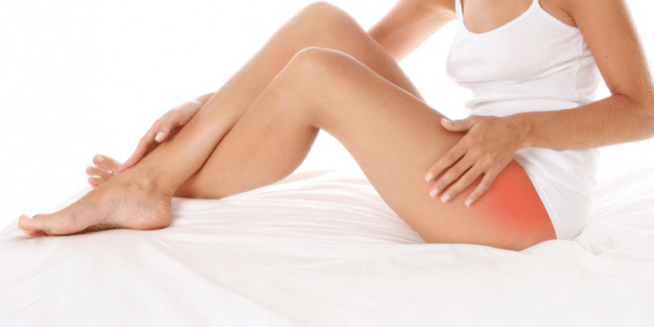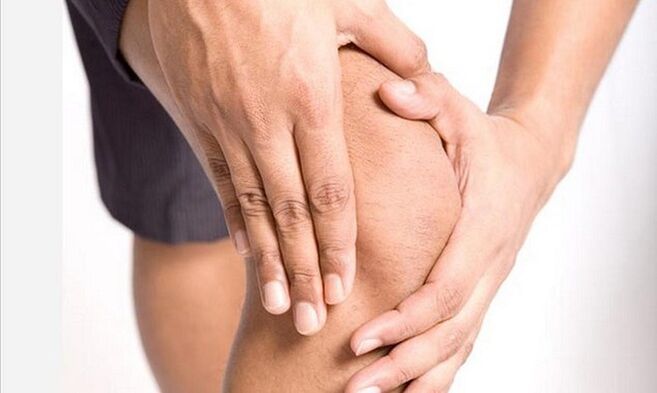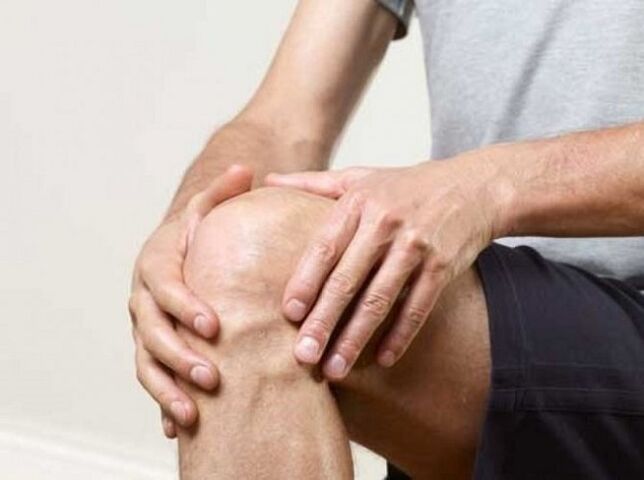
All joints of the human body have two enemies that prevent their full functioning. These are arthrosis and arthritis, although similar in name, are two different pathological processes that affect the cartilage of the joints. In the following, we examine how arthrosis differs from arthritis.
As you know, cartilage ensures the function of the joints. Cartilage is strong and tough because it lacks blood vessels and nerve endings. This relieves tissue stress where there are capillaries or nerve fibers.
When a person is in motion, cartilage tissue promotes painless, unobstructed rotation of bone heads in the joint cavity, thereby preventing frictional injury to the joint. While jumping, walking, cartilage softens the load, performs the function of absorbing shock.
Osteoarthritis and arthritis lead to joint stiffness, which prevents a person from living a normal life due to limited movement. There are a number of symptoms in which the two diseases are similar, but there are many other fundamentally different symptoms.
Physiological processes caused by arthritis
The first symptom of the disease is joint pain. With arthritis, the process of inflammation of the cartilage tissue begins.
In the joint, arthritis affects:
- joint capsule;
- synovial fluid that lubricates and nourishes tissues and the joint cavity;
- located along the edge of the synovial membrane.
Patients diagnosed with arthritis most often complain of pain and joint stiffness. The inflamed area begins to turn red and the temperature rises even at the site of arthritis or polyarthritis. In some cases, the pain syndrome can also be felt in the paired joint of the other arm or leg.

The symptom that worries the patient in the presence of arthritis and polyarthritis is swelling of the outer tissues of the joint.
Although the functions have been reduced, the structure is not deformed. Arthritis causes the appearance of an inflammatory process in cartilage tissue that is triggered by trauma, infection, or metabolic disorders. This disease is completely curable, but only on condition that the patient follows the doctor’s recommendations during treatment and does not use unconfirmed folk remedies for arthritis. If this process is allowed to proceed, the disease leads to collective degradation.
Physiological processes caused by arthrosis
The presence of arthrosis or spondyloarthrosis leads to pathological processes that occur in the joint cavity. Because there are no vessels in the cartilage tissue, it feeds on the synovial fluid, which contains many elements.
When a person reaches old age, the metabolic processes in his body begin to slow down, as a result of which the cartilage’s food deteriorates, leading to its deterioration.
Cartilage with various arthrosis becomes thinner and is unable to cope with shock-absorbing functions. Because of this, patients begin to feel the pain syndrome the moment the joint is affected.
In this case, there is no point in taking anti-inflammatory drugs for osteoarthritis as there is no inflammatory process. This disease occurs in older people. Its occurrence is influenced by a person’s lifestyle. People who eat right, lead a healthy lifestyle, arthrosis usually does not appear.
Another factor in the extent to which arthritis differs from arthrosis is that, unlike the first, the second disease has no edema, redness of the tissues.

Arthrosis also differs in that it affects a specific joint. If one arm touches the joint, the other will not. It often occurs in large joints such as the hips or knees.
Different and similar characteristics of diseases
Similar symptoms:
- in the morning a person feels numbness and stiffness in the joint;
- loss of complete limb movement;
- pain when moving the affected joint.
These are symptoms of two diseases, but the pain has a different nature, the location of occurrence and the duration of feelings are different. As a general rule, the physician relies on these indications when making a diagnosis.
Differences between arthrosis and arthritis
- With arthritis, an increase in the temperature of the skin at the site of the affected joint is observed, a process caused by inflammation. But in the case of arthrosis, despite the degenerative process running, this symptom is missing.
- Arthritis leads to swelling of the upper tissues, the second disease lacks this symptom.
- The presence of polyarthritis, an arthritis caused by inflammation, can lead to subcutaneous nodules. Such symptoms are not characteristic of arthrosis.
- Arthrosis causes a deformation process in the joint, and if left untreated (using ointments for arthrosis or other methods), it becomes inoperable. The presence of polyarthritis or arthritis does not lead to deformity.
- Inflammation of the arthritis causes the skin of the affected area to be redder. The second disease does not change the color of the skin.
Similar signs and differences
During the study, several shades can be diagnosed. The following is a description of the symptoms associated with individual and similar symptoms.
Painful feelings
As mentioned above, pain syndrome occurs in both diseases. However, arthritis should be characterized by the presence of inflammation that leads to pain. The nature of the pain is acute and can appear even at night or immediately after waking up.
Many themselves exacerbate the situation when they use a new miracle cream or a cure advertised on the internet to treat polyarthritis. Any good doctor will tell you that you cannot prescribe treatment for arthritis on your own.
For arthrosis, there is pain due to the breakdown of cartilage tissue, as a result of which it is unable to reduce the load. If there is no cushioning, the bone device will be damaged.
A person feels painful pain after long walks or while performing exercises that put a strain on the joint. At the first appearance of the disease, the patient may feel a slight discomfort, but as the disease progresses, the condition only worsens. In this case, you should not only take tablets or other medications for arthrosis, the treatment should be complex and under the supervision of a doctor.
Deformation process
Both diseases can change the structure of the joint. Arthritis can be identified by external physiological changes that can be seen on visual inspection: an increase in local temperature, redness, swelling, and the formation of nodules.
It is often associated with arthritis: weakness, increased sweating, psoriasis. Only certain types of arthritis can lead to changes in the structure of the joint - these are osteoarthritis and traumatic arthritis.
Arthrosis is a more insidious disease because it does not manifest externally. However, active deformation of the tissues occurs in the joint cavity. Cartilage becomes thinner and, as a result, bone tissue is subjected to unusual stress.
Inflammation
With arthritis, swelling appears in the area of the affected joint. This is due to the inflamed synovial film located in the center of the capsule. Elevated leukocyte levels were found during examination of the patient's analyzes. As a general rule, the presence of infection or injury leads to the appearance of an inflammatory process.
Arthrosis does not lead to leukocyte growth as there is no inflammation. The degenerative process begins gradually and often one does not even notice the symptoms.
Clicks and crunches
The symptom of arthrosis is a cracking in the sore joint. This is due to worn cartilage tissue, which causes pain during the interaction of bone tissues. But crackling doesn’t always indicate the presence of a disease, a healthy person can hear clicks. In arthrosis, the sound will be rough and dry.
In the case of arthritis, there is no cracking, because as a result of the inflammation, the joint swells and cannot move completely, the cartilage tissue performs its functions.

Joint mobility
Both diseases also have a common symptom in limiting joint mobility. However, the causes of stiffness are different.
Decreased joint motor activity with arthrosis is caused by thinning of cartilage tissue, while at the onset of the disease there are no such symptoms at all. In arthritis, stiffness is caused by inflammation and is extensive. The joint was completely paralyzed.
General and specific causes of occurrence
Common causes of illness are injuries that a person has received while running or jumping. In addition, regular and strong joint loading can also lead to this. Because of this, diseases are most common in professional athletes. Another cause is severe or frequent hypothermia, which often occurs in the joints of the limbs.
Arthritis occurs as a result of inflammation caused by the appearance of an infection in the body; this is not typical of arthrosis. Because inflammation is a whole body process, arthritis is only a consequence. In order to cure the disease, the cause of the onset of the inflammatory process must be found and eliminated. In addition, being overweight can lead to the appearance of arthritis as it strains the joints. In this case, the joints of the lower extremities and the musculoskeletal system are at risk.
Osteoarthritis is a separate disease as this process has nothing to do with the general condition of the body. The reasons for its appearance are hidden in the small amount that enters the body due to improper nutrition. Bad habits such as smoking and alcohol consumption can also provoke the disease. Often, its appearance is promoted by diseases of the circulatory tract and hormonal disorders. According to statistics, mainly elderly people suffer from arthrosis.

Who is in danger
Any person of any age is prone to arthritis. The disease resulting from the infection even affects infants. According to statistics, women are more likely to suffer from arthritis.
As for osteoarthritis, elderly people suffer from it. As a general rule, deformation of cartilage tissue structure begins at age 60 years of age. In fact, the older a person is, the slower the metabolic processes in the body are, this is also influenced by the person’s lifestyle. And otherwise, those who have arthritis are more prone to arthrosis.
People at risk include people who have bad habits, expose their bodies to regular physical activity, and eat poorly.
It is common in the treatment of arthritis and arthrosis
In part, the same measures are taken to treat these diseases:
- the patient must rule out stress, establish a sparing system;
- take medications that restore cartilage and nourish it;
- perform exercise in conjunction with massage to improve the body’s metabolic processes and blood flow to the patient’s joint;
- use of analgesics to relieve pain;
- the doctor prescribes intraarticular blockade in the form of injections;
- oxygen supply to the joint;
- the patient switched to a complex diet.
In particular, the treatment of antibiotics used to treat infectious arthritis varies to treat the underlying cause of the disease.
When the stage is advanced, surgery is resorted to as treatment. This need arises when the cartilage tissue is completely destroyed. In this case, a prosthesis bandage is placed.























